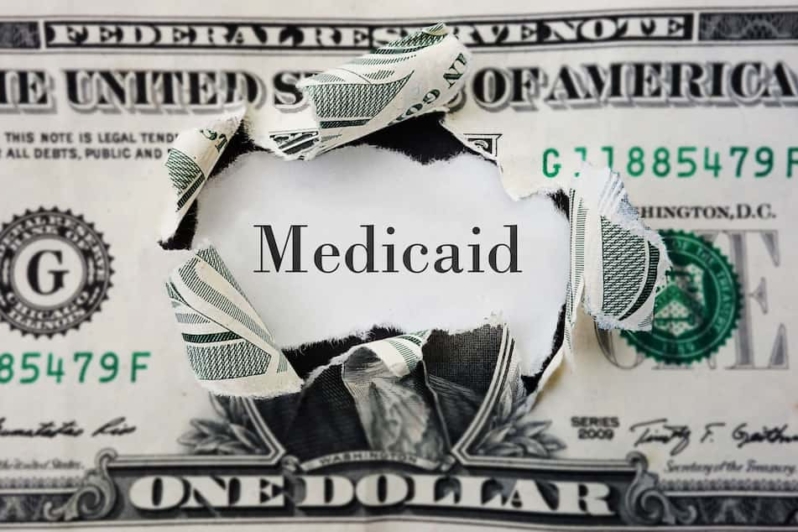Beware Medicare’s Penalties for Late Enrollment
People generally become eligible for Medicare at age 65, when they can receive benefits under Part A (hospital coverage), Part B (medical coverage) and Part D (prescription drug coverage). But Medicare doesn’t want you to delay enrollment. If only those who needed insurance signed up on time and healthier people waited, the healthy beneficiaries’ premiums would not be available to help underwrite the costs of the less healthy ones.
Posted on September 14, 2020

For this reason, Medicare imposes fairly significant penalties for those who postpone enrolling. To encourage everyone to sign up when they first become eligible, the program increases premiums based on how long a beneficiary waits to enroll. There are also consequences for delaying enrollment in Medicare supplemental coverage, called Medigap.
The penalties differ for the different “parts” of Medicare, and it’s important to be aware of them and how they can be avoided. Here’s a rundown:
Part A
Those receiving Social Security or Railroad Retirement Board benefits when they first become eligible for Medicare will automatically be enrolled in Part A starting the first day of the month they turn 65. If you aren’t already receiving these benefits as you approach age 65, you’ll need to sign up for Part A on your own.
You generally won’t pay a monthly premium for Part A coverage if you or your spouse paid Medicare taxes while working. If you aren’t eligible for premium-free Part A, and you don’t buy it when you’re first eligible, your monthly premium may go up 10 percent for every 12 months you didn’t have the coverage. You’ll have to pay this higher premium for twice the number of years you could have had Part A but didn’t sign up. For example, if you were eligible for Part A for two years but didn’t sign up, you’ll have to pay a 20 percent higher premium for four years.
If you are still working and have an employer or union group health insurance plan, you may not need to sign up for Medicare right away. You will need to find out from your employer whether the employer's plan is the primary insurer. Also, be aware of Part A’s impact on Health Savings Accounts. For more information on Part A, click here.
Part B
You can sign up for Part B at the same time that you become eligible for Part A. You can sign up during your Initial Enrollment Period, which is the seven-month period that includes the three months before the month you become eligible (usually age 65), the month you are eligible and three months after the month you become eligible.
If you do not sign up for Part B during this period, your Medicare Part B premium may go up 10 percent for each 12-month period that you could have had Medicare Part B, but did not take it. In addition, you will have to wait for the general enrollment period to enroll. The general enrollment period usually runs between January 1 and March 31 of each year. Coverage doesn’t start until July of that year, which may create a gap in your coverage.
However, If you are still working and have an employer or union group health insurance plan (your own, a spouse’s, or if you’re disabled, a family member’s), it is possible you do not need to sign up for Medicare Part B right away. You will need to find out from your employer whether the employer's plan is the primary insurer. If Medicare, rather than the employer's plan, is the primary insurer, then you will still need to sign up for Part B. If the employer’s plan is primary, you can sign up for Part B anytime you’re still covered by the group health plan or during the eight-month period that begins the month after the employment ends or the coverage ends, whichever happens first. Note that COBRA coverage does not count as employer coverage. For more information on Part B, click here.
Part D
As with Part B, you can sign up for Part D during your Initial Enrollment Period. If you postpone signing up past this seven-month period, the Medicare Part D premium will increase at least 1 percent for every month you wait. For example, if the premium is $40 a month, and you delay enrollment for 15 months, your premium penalty would be $6 (1 percent x 15 x $40 = $6), meaning that you would pay $46 a month, not $40, for coverage that year and an extra $6 a month each succeeding year.
Beneficiaries are exempt from these penalties if they did not enroll because they had drug coverage from a private insurer, such as through a retirement plan, at least as good as Medicare's. This is called "creditable coverage.” Your insurer should let you know if their coverage will be considered creditable. You may owe a late enrollment penalty if at any time after your Initial Enrollment Period is over there’s a period of 63 or more days in a row when you don’t have Part D or other creditable prescription drug coverage. You’ll generally have to pay the penalty for as long as you have Part D coverage. For more about Part D, click here.
Medigap Coverage
With all the deductibles, copayments and coverage exclusions, Medicare pays for only about half of the medical costs of America's senior citizens. Much of the balance not covered by Medicare can be covered by purchasing a "Medigap" insurance policy. The best time to buy a Medigap policy is during your Medigap Open Enrollment Period, which is a six-month period that begins on the first day of the month in which you’re 65 or older and are enrolled in Part B. (Some states have additional Open Enrollment Periods.) After this enrollment period, you may not be able to buy a Medigap policy, and if you’re able to buy one, it may cost you more.
Also, your eligibility for a Medigap plan could be jeopardized if you join a Medicare Advantage plan when you first become eligible for Medicare or you decide to return to original Medicare from a Medicare Advantage plan. Those in Medicare Advantage plans generally don’t need Medigap policies, which can’t be used to pay Medicare Advantage plan copayments, deductibles, and premiums. If you joined a Medicare Advantage plan when you were first eligible for Medicare and decide you want to return to original Medicare, you can choose from any Medigap policy within the first year of joining the Advantage plan.
If you had a Medigap plan but switched to Medicare Advantage, you have the right to go back to the same Medigap policy you had before you joined the Medicare Advantage plan, if the same insurance company you had before still sells it. If the policy is no longer available, you have a guaranteed right to buy a Medigap policy designated A, B, C, F, K or L that is sold in your state by any insurance company as long as you had Medicare Advantage for less than a year. In these cases the insurers cannot refuse you coverage as long as you apply for the Medigap policy no later than 63 days after coverage from your Medicare Advantage plan terminates. The insurance company is required by law to sell or offer you a Medigap policy even if you have health problems (called "pre-existing conditions"). If you had Medicaid Advantage for a year or more or wait longer than 63 days, you can apply but you aren’t guaranteed acceptance.
The 2016 Medicare & You handbook explains Medicare’s rules in greater detail. The handbook can be downloaded online at: https://www.medicare.gov/medicare-and-you/medicare-and-you.html
For AARP’s Medicare article, “Enrolling at the Right Time,” click here.
More from our blog…
Capacity Requirements for Executing Estate Planning Documents
Proper execution of a legal instrument requires that the person signing have sufficient mental "capacity" to understand the implications of the document. While most people [...]
What You Should Know About Long-Term Care
Research shows that roughly one in seven adults aged 65 or older will need long-term care at some point in their later years. Meanwhile, tens of millions [...]
Understanding Medicaid: What Does Medicaid Cover?
In the complex and frequently changing landscape of health care in the United States, Medicaid stands out as a vital program. Since 1965, it has [...]
Elder Financial Abuse: How an Elder Law Attorney Can Help
Elder financial abuse is a significant issue affecting many older adults nationwide. It involves someone exploiting or misusing an older person’s finances or assets for [...]
Recent blog posts

FREE WEBINAR
5 Things to Know About
Estate Planning
When You Turn Sixty-Five





